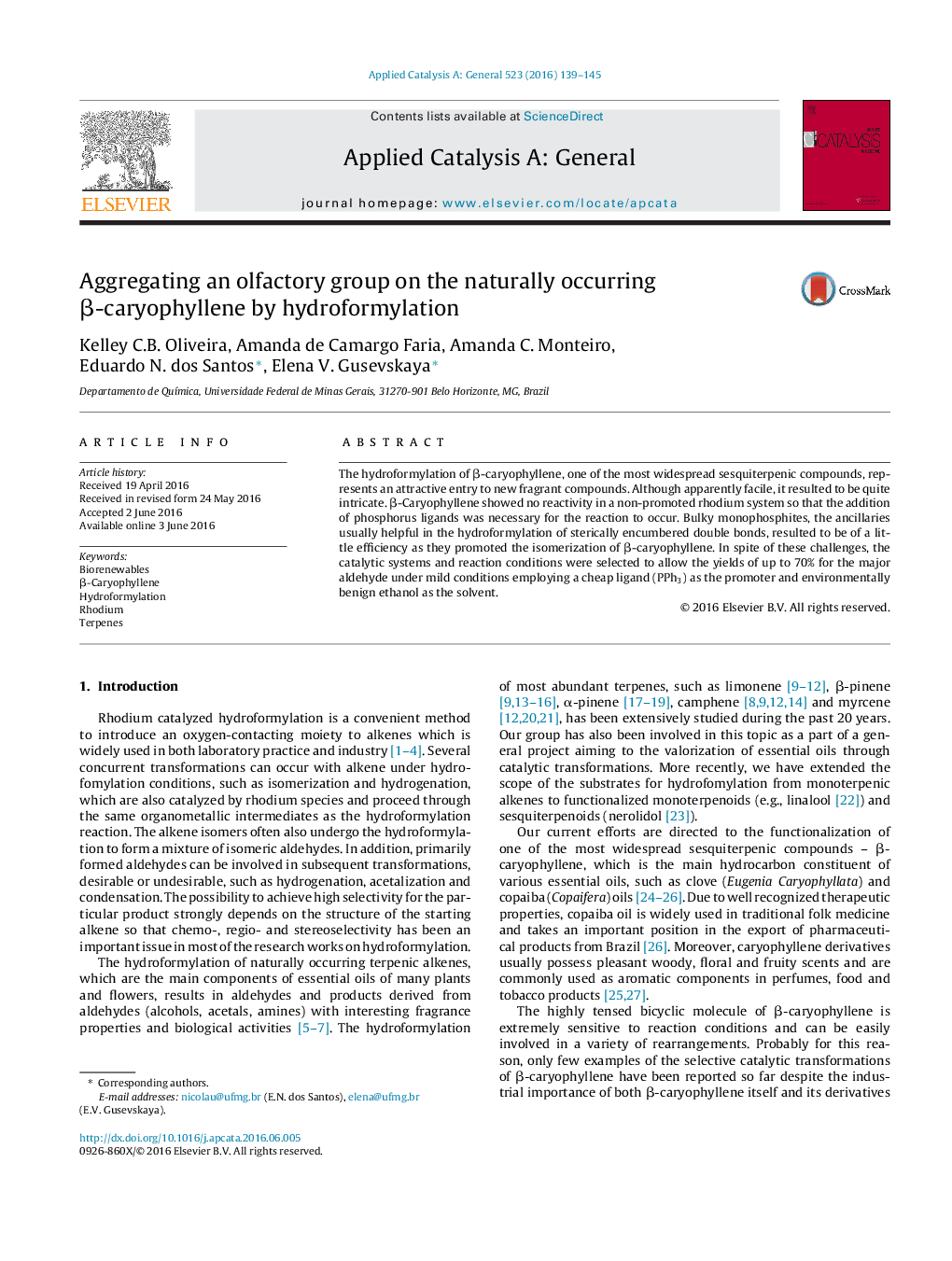| Article ID | Journal | Published Year | Pages | File Type |
|---|---|---|---|---|
| 38760 | Applied Catalysis A: General | 2016 | 7 Pages |
•Rhodium catalyzed hydrofomylation of β-caryophyllene using PPh3 as the ligand and ethanol as the solvent has been developed.•The reaction gives the monoaldehyde derived from the endocyclic double bond in ca. 70% yield along with the dialdehyde.•A combined GC yield for these two major hydroformylation products was up to 85%.•The hydroformylation of the naturally occurring β-caryophyllene represents an attractive entry to new fragrant compounds.
The hydroformylation of β-caryophyllene, one of the most widespread sesquiterpenic compounds, represents an attractive entry to new fragrant compounds. Although apparently facile, it resulted to be quite intricate. β-Caryophyllene showed no reactivity in a non-promoted rhodium system so that the addition of phosphorus ligands was necessary for the reaction to occur. Bulky monophosphites, the ancillaries usually helpful in the hydroformylation of sterically encumbered double bonds, resulted to be of a little efficiency as they promoted the isomerization of β-caryophyllene. In spite of these challenges, the catalytic systems and reaction conditions were selected to allow the yields of up to 70% for the major aldehyde under mild conditions employing a cheap ligand (PPh3) as the promoter and environmentally benign ethanol as the solvent.
Graphical abstractFigure optionsDownload full-size imageDownload high-quality image (89 K)Download as PowerPoint slide
